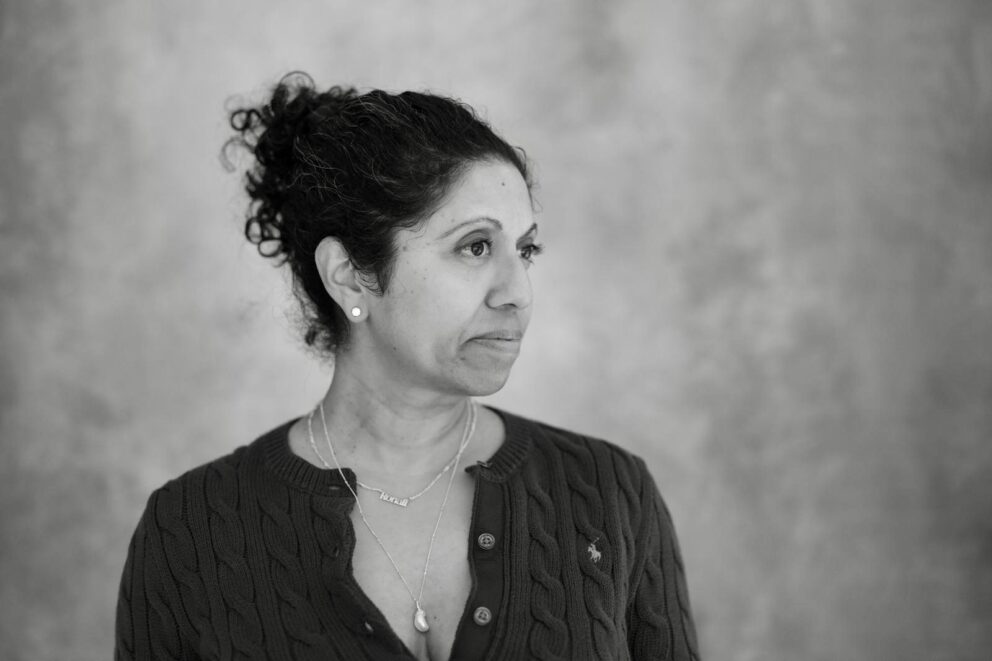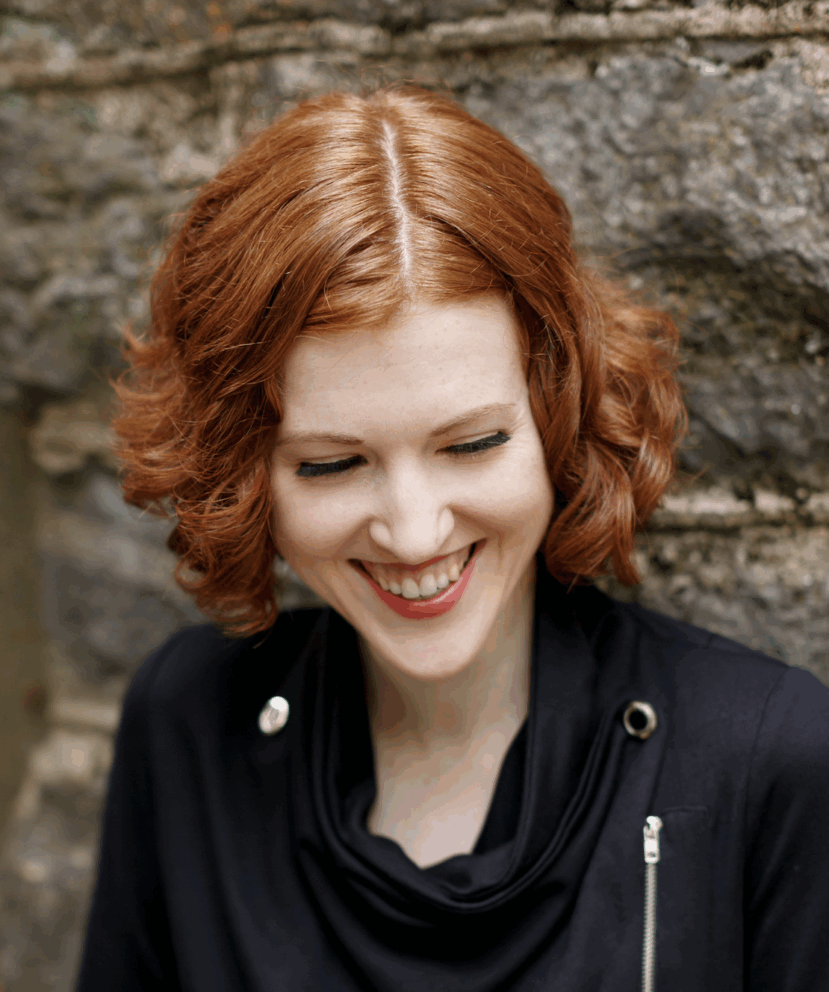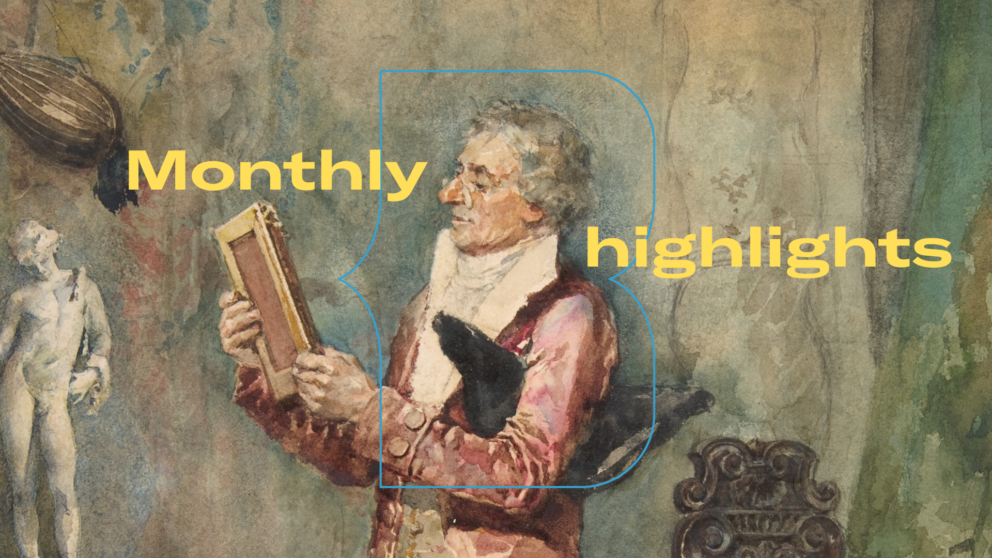Hunting In America, written by the award-winning Tehila Hakimi and translated by Joanna Chen, is a novel that lingers in the subconscious long after reading: its themes of alienation, the blur of work-life balance, and the ever-present hint of violence never far from the book’s surface leave quite an impression.
So too does the cover – an easter-egg laden illustration that captures the novel’s compelling essence and leaves as many questions as answers. We spoke to Designer Jake Cook to find out how it all came together.

What were your first impressions after reading the book?
Jake Cook: I found the book to be unsettling, but also oddly relatable. The way the narrative slips between mundane grey offices and the open danger of the wilderness, and the difference in the protagonist’s mindset in each environment is really compelling. She starts to slowly unravel and more of that wildness bleeds into her everyday office job. That led me to the cover’s main idea.
Talk us through your design process. How does it all come together?
JC: One of the first things I do is actually read the book. This helps me understand the story’s atmosphere as well as pull out any key visuals I can use in the design. While reading I make notes, brainstorm and sketch ideas (they’re all too messy to show here!)
A big theme in Hunting In America is the protagonist’s increasing obsession with hunting and how it contrasts with her work-life, so I felt like the cover needed to show this contrast, whether that is through the colours, type or imagery. The book is a bit strange and tense and wacky, so the cover needs to reflect that. I began making some different visuals: one trend right now is using an old fashion illustration but subverting it with modern type or colours, so I found some great old deer paintings and gave that a go. I tried some photographic ideas too – what if we gave an old computer monitor antlers, to look a bit like a deer?

We discussed the idea of having an office scene with something slightly out of place, which led to the image of an office cubicle with a mounted deer head. I thought that could look intriguing – It shows that the protagonist has started letting her obsession seep into her work life. I also felt the feelings of isolation and confinement you get from a work cubicle image worked in this context too – channeling the TV show Severance a bit.
So I started looking for visuals, but I couldn’t find anything in the style I wanted. I decided to have a go at illustrating it myself, in the very clean, block colour aesthetic. In a lot of architectural floor plans they use an isometric perspective, which is a bit different. I had a lot of fun illustrating the cover and eventually it came down to two options. Thankfully the office won, and after a few colour options we got the final design! Once it was all approved I also had the pleasure of animating the cover reveal, adding a bit of movement and life to the scene! The editor Serena Arthur was so helpful and championed the design through the whole process, she was instrumental to its success and I appreciated her support!
It’s a cover packed with easter eggs for the eagle eyed… What’s your favourite element?
JC: Personally, I like the sticky note with the family drawing on. The book starts off with the protagonist moving from Israel to America, leaving all her friends and family behind. I thought this sticky note could be a subtle nod to that – maybe it was given to her by a young sibling, cousin or friend. Just one little memory of the people she left behind. Its subtle but if you look closely…

Finally, for those interested in pursuing design as a career: how did you make the step into book design?
JC: I was very lucky to study Design for Publishing at my university, a course which is offered by only a few places. There we made magazines, websites and also book covers. We were very fortunate to have some brilliant book designers come in and give talks and set projects. It was these people who really inspired me to pursue book cover design specifically. Thats not to say you have to do a Design for Publishing course or even go to university to get into book design, you don’t. Once I graduated, I spent a lot of free time setting myself projects – redesigning covers of my favourite books and working on my portfolio. I took part in the yearly Penguin Design competition, which is great experience for working to a live brief with a time limit. For those interested in pursuing design my advice is to set yourself different projects, redesign the covers you love and the ones you don’t, try designing a series of two, three or more books. And especially design a book for each genre. With this you’ll have a wide ranging portfolio, showing your versatile skillset. Also, don’t be afraid to reach out to the designers you admire for feedback. I spoke to loads of very kind and very helpful designers for feedback on my portfolio, everyone was more than happy to help, so don’t be afraid! (just don’t spam or harass people, please!)
We also spoke to the author of Hunting In America, Tehila Hakimi, and the book’s translator Joanna Chen, to offer a little further insight into the themes of the book, and their thoughts upon seeing the cover for the first time.

What were your first impressions upon seeing Jake’s cover?
Tehila Hakimi: “I really loved it, from the first glance. I am actually in love with this cover. First it’s beautiful, super detailed, with all those really small workspace things. It’s really smart, and I really love everything about it. But the thing that caught me the most in this beautiful design is how funny it is, weird and funny, grotesque and funny, like work, like life. I felt like Jake really got the book, the deep essence, the tension, the cold humor, everything, and I am so lucky to get such an amazing design and interpretation of the novel.”
Joanna Chen: “I was bowled over by Jake’s cover, not just because it catches the eye but because it captures so perfectly the underlying vibe of Hunting in America. It’s a precise visual interpretation of what the novel is about – alienation, claustrophobia, simmering violence, decompartmentalization. As a translator, I love the attention to detail; every time I look at the cover I notice something else and this, for me, mimics the pleasure of deep reading.”
Tell us more about the book. What can readers expect, and how has the reception been since publication and translation?
TH: “I think this novel has this special dark and thrilling atmosphere, you can expect to get drawn after this woman, her voice, I know I did, I had to follow this woman wherever she went. At the same time, it also deals with lots of pressing issues, the female body, guns, relationships, power relationships, love, work, Israel vs America and more. The reception was amazing, and I am so thrilled about the comments, and such deep reads and thoughts people have about this book.”
The book – and it’s cover – offer a remarkable depiction of the eerie emptiness at the heart of the corporate workplace. I wondered how your own experiences within the workplace had influenced your writing?
TH: “Thank you so much, the workplace is a major topic in my work from the very beginning, also in my poetry and short prose. My career and workpath definitely influenced my writing. I’ve worked over a decade in engineering and this definitely shaped the novel’s details and rhythms, as I experienced first-hand both the demands of total commitment to a job and the disillusionment when the company I worked for went bankrupt. These experiences made me question the place of work in our lives and the dangerous fusion of ambition and passion in a career. This idea of work-life balance, which is a catchphrase in today’s employment market, is for me a lie, as there is no balance, not to life anyway. So I had to go in, to use this, if I anyway had to sit in my cubicle, and work endless hours I’d better write about it, make something out of all this time, take the balance back to my side.”



